Chile was to be the perfect host for the UN Climate COP which has as its focus the expansion and further legitimization of market-based policies based on the neoliberal commodification of the earth, an expansion of industrial tree plantations as a “natural climate solution” and more unjust forest carbon offsets. If industry had their way, these future climate schemes could include genetically engineered “climate ready” trees.
Today Chile announced it will not host the COP due to the peoples’ uprising.
¡El Pueblo Unido Jamás Será Vencido!
This photo essay by Orin Langelle emerged from a Campaign to STOP GE Trees delegation to Chile in advance of the country hosting the IUFRO Tree Biotechnology Conference in 2017. The photos document the wildfire devastation caused by the combination of industrial tree plantations and climate change-induced heatwaves and droughts. It also gives the back story of these plantations and their connection to the deadly Pinochet dictatorship.
Chile’s 2017 Devastating Fires – The Legacy of Pinochet Continues
español: Los Fuegos Devastadores de Chile en 2017 – El Legado de Pinochet Continúa

Burned pine plantation in the community Manquo in Florida, in the zone of the wildfires near Concepción
Photographer’s note: An international delegation from the Campaign to STOP Genetically Engineered Trees arrived in Santiago, Chile on 20 March 2017 to document the social and ecological impacts of industrial tree plantations in the country, and their link to the recent wildfires that were the worst in Chile’s history. The fires started in January 2017. It is estimated that eleven people were killed, 1500 houses destroyed, thousands displaced and almost 300,000 hectares acres decimated. The delegation was sponsored by OLCA (Observatorio Latinoamericano de Conflictos Ambientales). I accompanied the delegation as a photojournalist and a participant. The opinions in this photo essay are mine and not necessarily the views of the delegation or the participants. I would be remiss and do a disservice to the viewer if I did not report on the historical background of what unfolded decades prior and still is affecting Chile, and were in part responsible for the fires. All of the following photos were taken between 21 – 30 March 2017. Notes of the historical background are in italics and very brief but the legacy of the beginning of neoliberalism in the Americas is long and tragic. I hope these nuances of the past are not lost on the present or potential future of the Mapuche and Chilean peoples.- OL
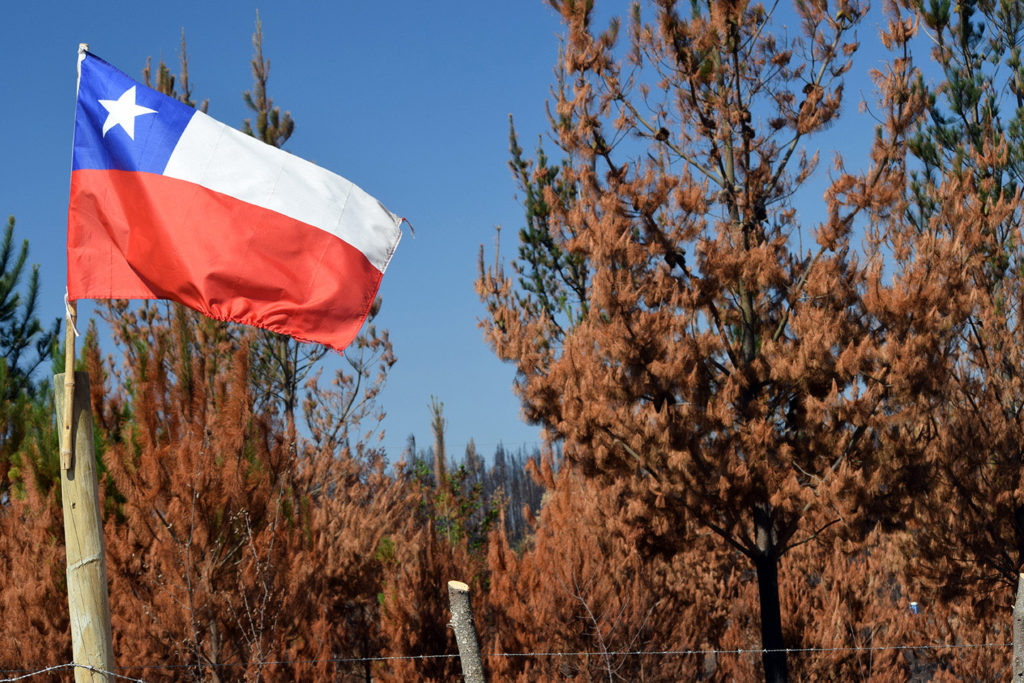
Symbolic Chilean flag flies in a pine plantation
General Augusto José Ramón Pinochet took power in Chile following a United States-backed coup d’état, with the help of the CIA, on 11 September 1973 that overthrew the democratically elected socialist Unidad Popular government of President Salvador Allende and ended civilian rule.
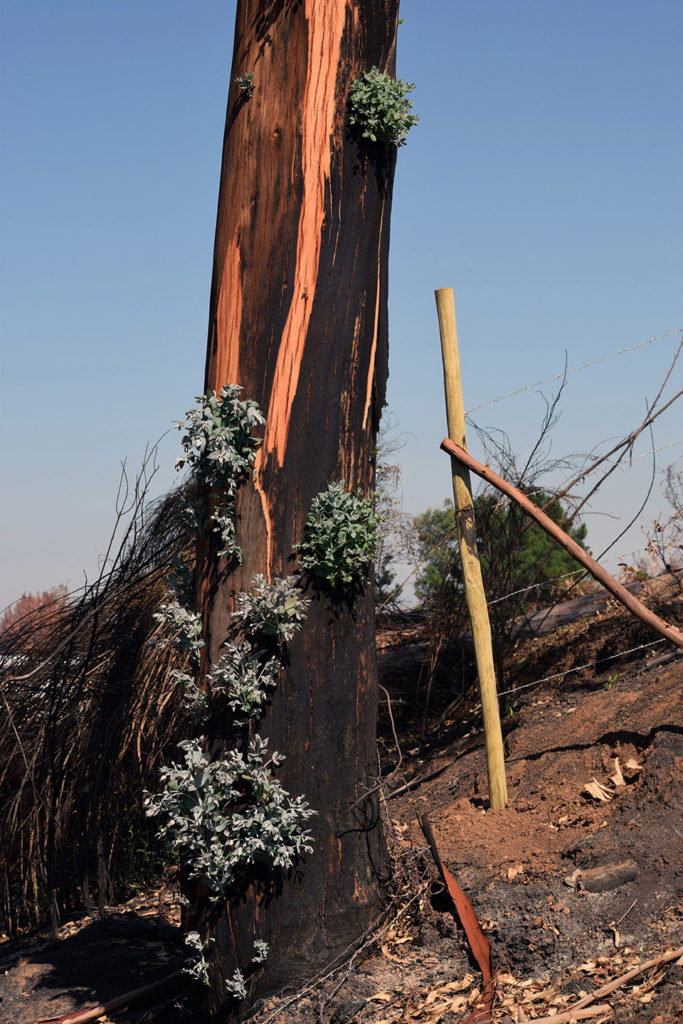
In our investigation the majority of details uncovered point to the fires being started by the timber industry itself for insurance purposes (more follows).
The support of the United States was crucial to the coup and the consolidation of power afterward. In December 1974, the ruling military junta appointed Pinochet Supreme Head of the nation by joint decree. From the start of the new military dictatorship harsh measures were implemented.

The passing of the Forest Ordinance 701 (Decreto Ley 701) in 1974, during the reign of General Augusto Pinochet, subsidized the expansion of tree plantations, giving away the National Forestry Corporation. This initiated the quick expansion of monoculture plantations of pine and eucalyptus trees for paper manufacturing and timber. Since then, many corporations have bought land and destroyed the once abundant native forests.
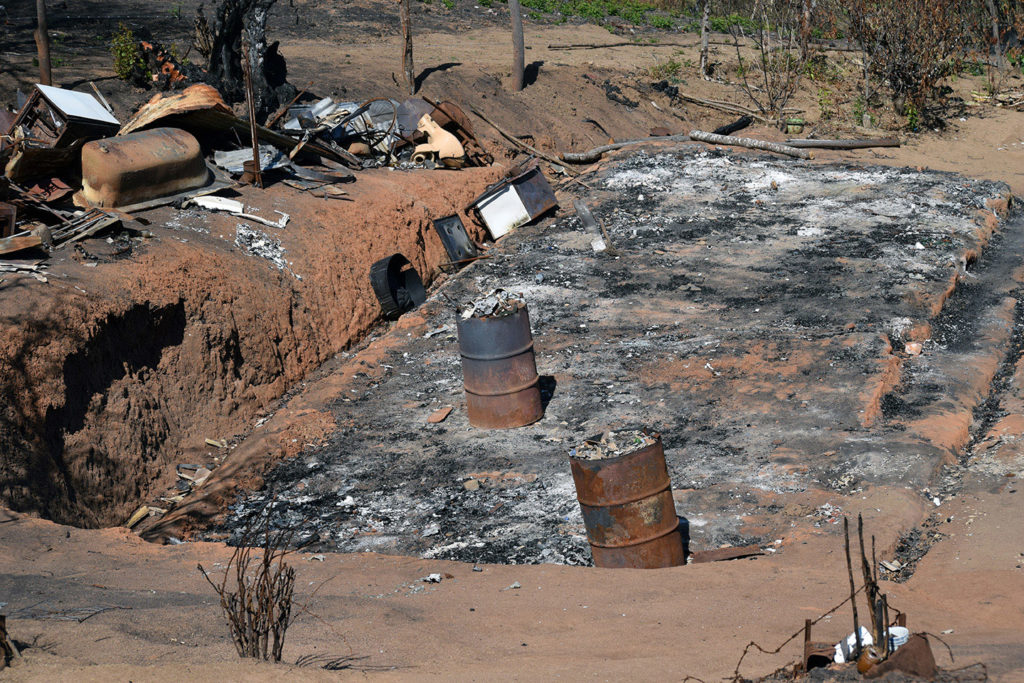
What was left of Juán Toledo and Ana Riffo’s house. They also lost their crops during the fires.
During the period of Pinochet’s rule, various investigations have confirmed the murder of 1,200 to 3,200 people with up to 80,000 people forcibly interned and as many as 30,000 tortured. According to the Chilean government, under the Pinochet dictatorship the official number of deaths and forced disappearances stands at 3,095.

Leoardo Guajardo’s house was saved from the fire, but he lost orchards and crops
Under the influence of the free market-oriented neoliberal “Chicago Boys” from the U.S., the dictatorship implemented economic liberalization, including currency stabilization, removal of tariff protections for local industry, banning of trade unions and privatization of social security and hundreds of state-owned enterprises.
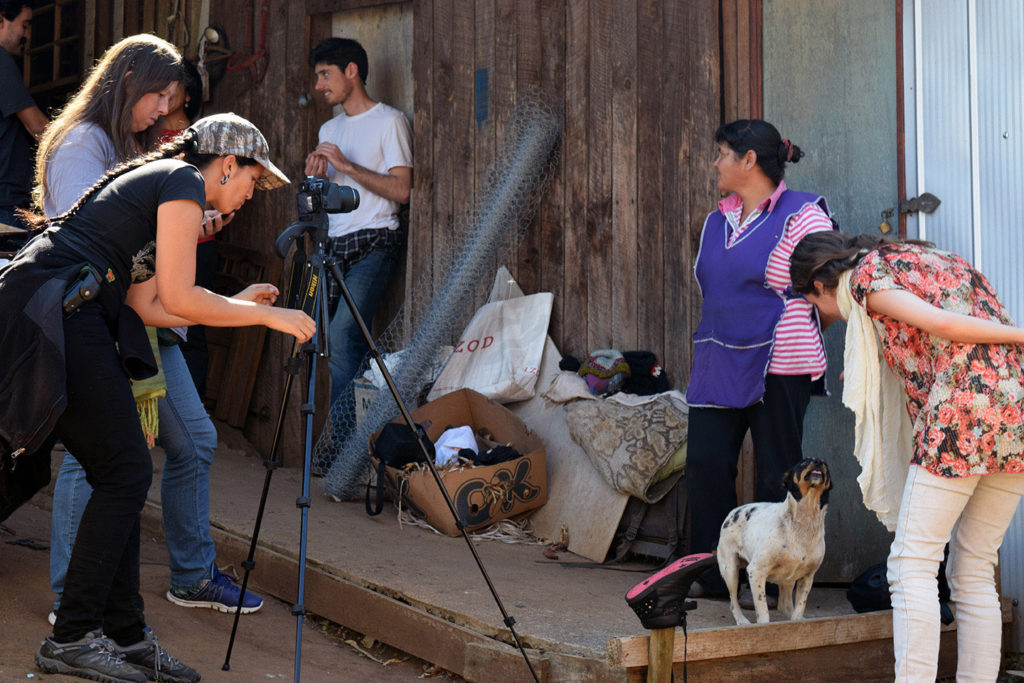
Ruth Merino (second from right), wife of Leoardo Guajardo, being filmed by Ruddy Turnstone (left), Global Justice Ecology Project and the Campaign to STOP GE Trees Steering Committee
September 11 has been somewhat eclipsed in the last decade and an half by another notorious anniversary, but it remains a date etched in Chileans’ minds: in 1973, this was the day General Augusto Pinochet seized power from the democratically elected Socialist government of Salvador Allende. Forty-three years after that sudden coup, and 27 years since its return to democracy, Chile is still recovering from the effects of Pinochet’s brutal rule.

Salvaged bed frame
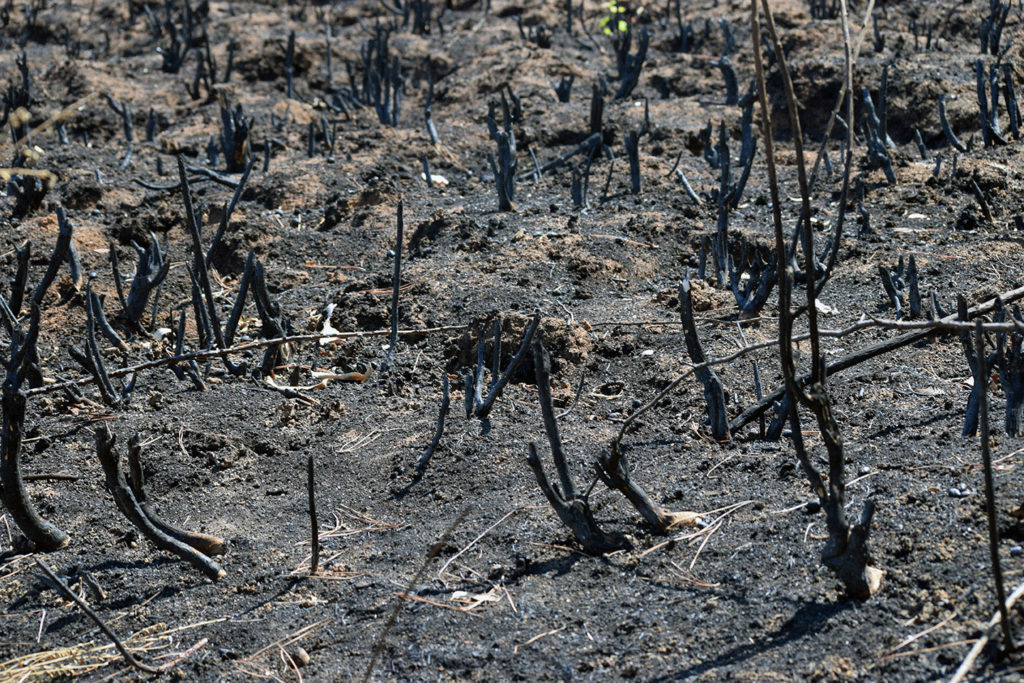
A part of Leoardo Guajardo’s charred orchard
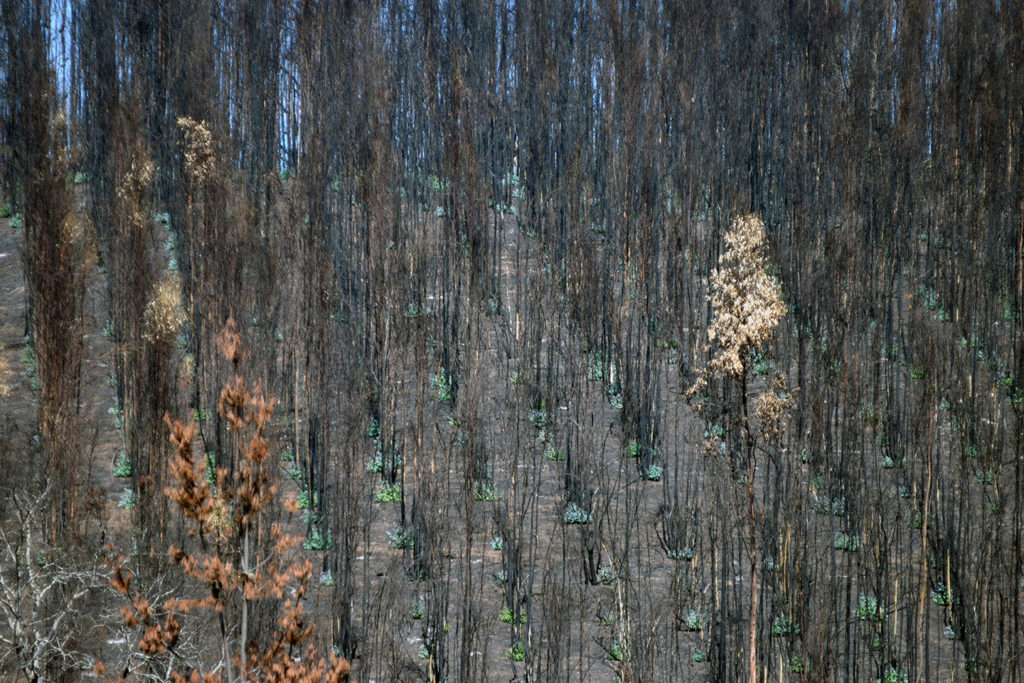
Victor Jara was a brilliant guitarist and played music and sang for the people. He wrote songs against the dictatorship. One day he was picked up by the military. It is not 100% clear if a soldier then chopped off his hands while he was in custody…other versions say the military severely hurt his hands and forced Jara to play the guitar just to laugh at him…another version says that his fingers were cut off one by one. There is no one official version, but what is official is that Victor Jara was shot at least 40 times in his head and his back after he was tortured. Victor Jara is dead but his songs live on. ¡Victor Jara, presente!
Sometimes democracy must be bathed in blood – Augusto Pinochet
I regret and suffer those losses, but it’s God’s will. He will pardon me if I committed excesses, but I don’t think I did – Augusto Pinochet
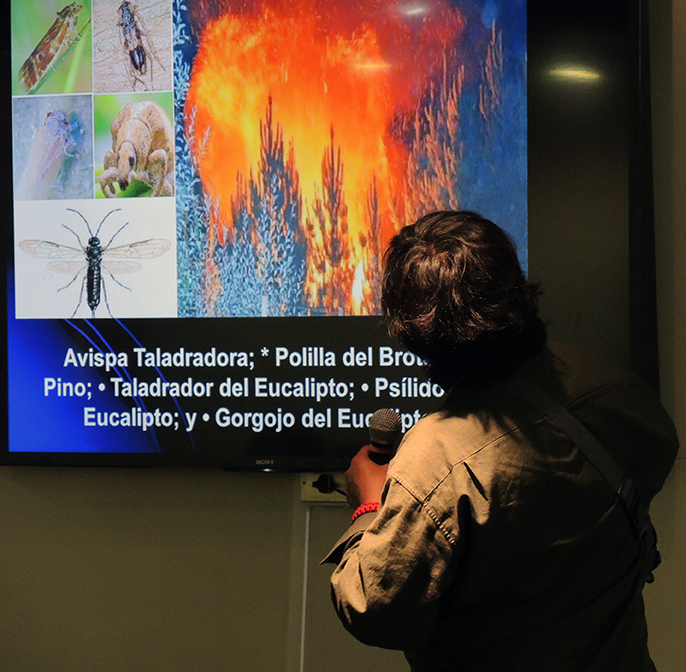
Did the timber industry start the wildfires? We learned that the pine plantations were infested by the insect avispa taladradora (woodwasp): Sirex Noctilio. The insect burrowed into the trees causing the commercial value of the trees to drop. The timber industry did not have insect infestation insurance but did have insurance against fires. It is widely believed that this is why the plantations of pine were torched. This hypothesis is part of the investigation and authorities still can´t deny it. What gives strength to this hypothesis is the overlap between the uncontrolled insect plague and the fire focus. Of course people who lost their homes and crops had no fire insurance and could not recover that loss. When the fires began, the industry and others tried to blame groups of the indigenous Mapuche. But real info showed that the fire focus was not close to Mapuche Territories.
I will end the references to the rise of American neoliberalism at this juncture of the photo essay:
The story of Chile’s forests is a painful one for the Mapuche communities. The modern day encroachment on Mapuche ancestral lands began with the passing of the Forest Ordinance 701 (Decreto Ley 701) in 1974. Many indigenous inhabitant were evicted and marginalized. During Pinochet’s regime, the area of 10 million hectares allocated to the Mapuche was reduced to only 350,000 hectares.
Since the fall of the dictatorship, one Government administration switched to the next; some Mapuche land has been seized, and some returned, leaving behind a “scattered patchwork” of indigenous lands, which were once part of the “Nación Mapuche”.

23 March- Arauco Pulp mill in the town of Ranquil in the Nueva Aldea sector. This is the second largest Arauco pulp mill in the country.

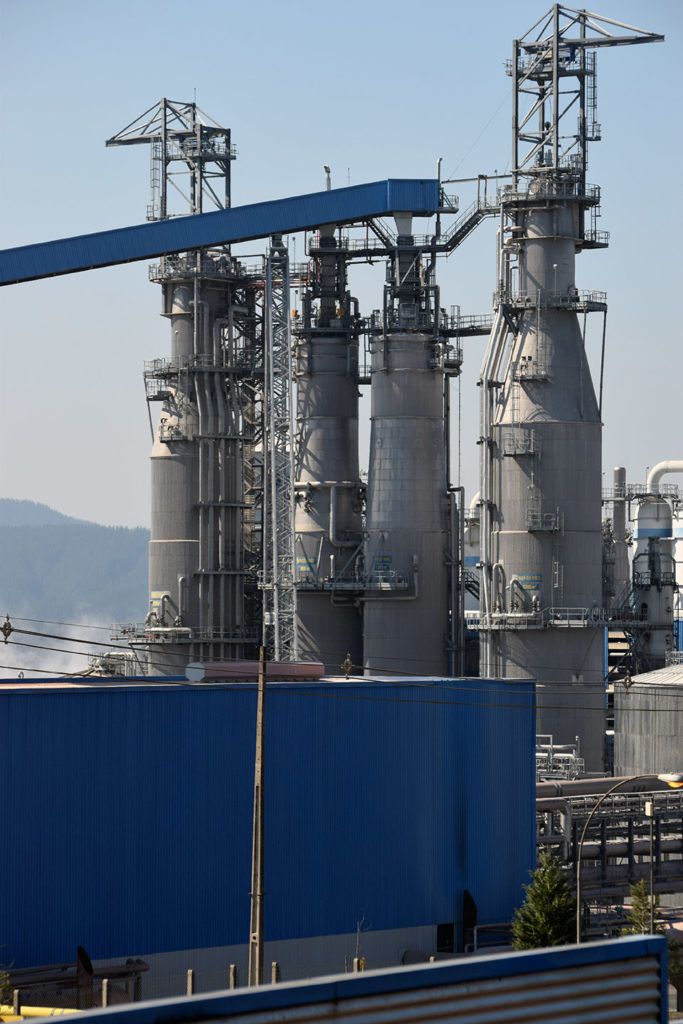
Ominous structures from the Arauco Pulp Mill
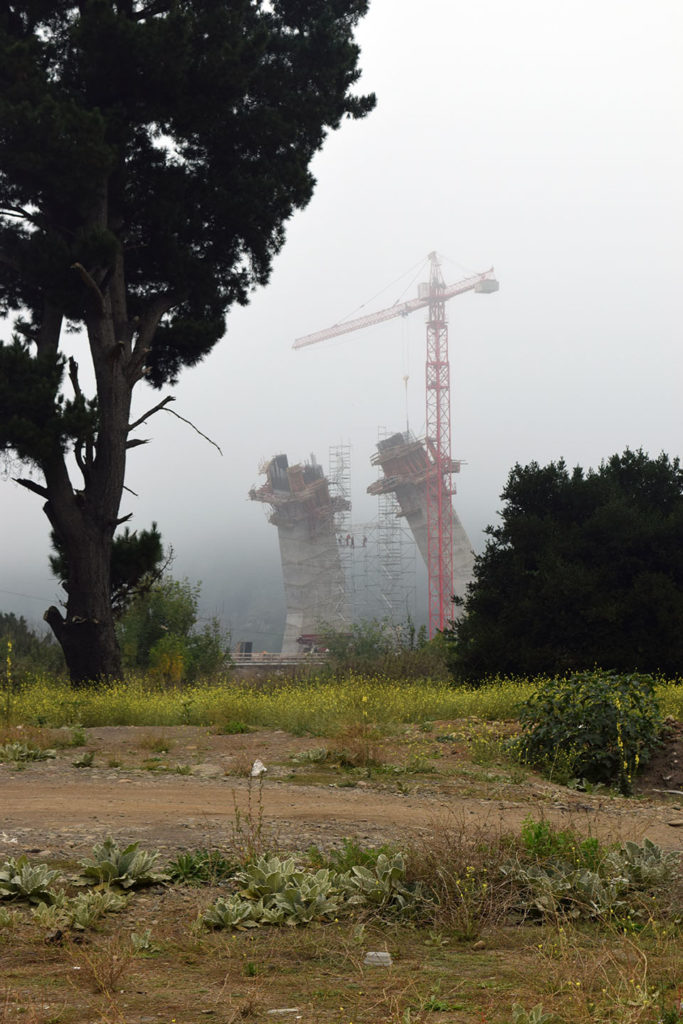
24 March – Another Ominous structure on the way to a Mapuche Water Ceremony, at Rio Cautín near Temuco, Chile
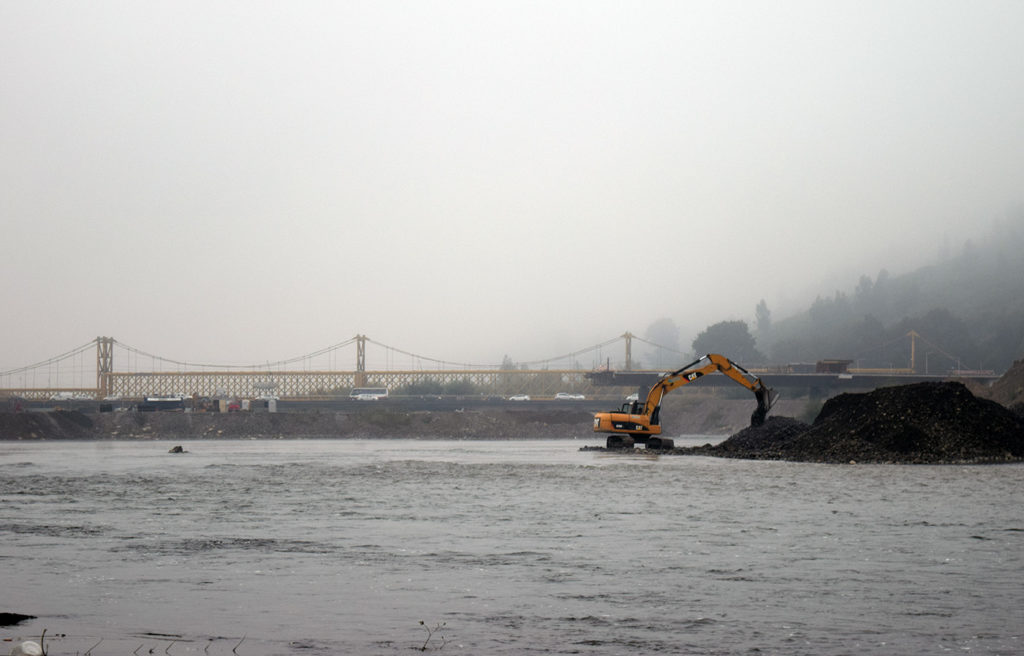
Dredging on the Rio Cautín

Prior to the Mapuche Water Ceremony, Ronny Leiva, Red de Defensa de los Territorios Araucanía, at the Rio Cautín
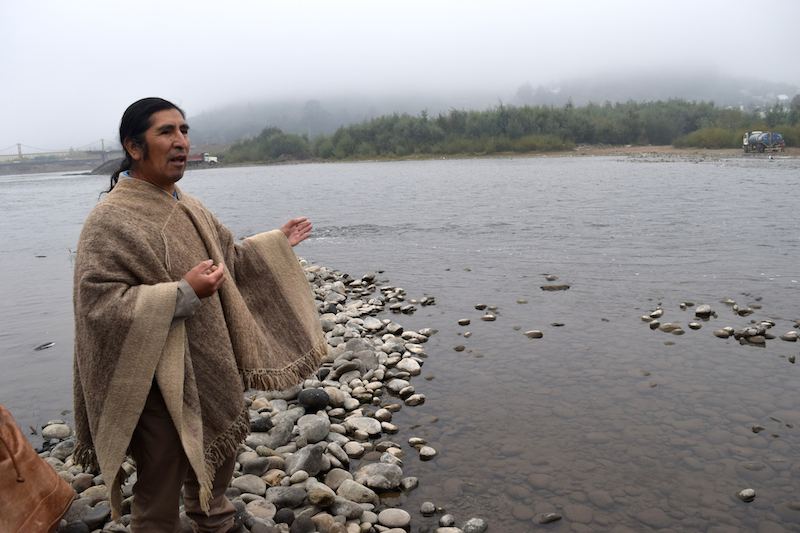
After the Water Ceremony, Mapuche Emilio Painemal speaks

Alfredo Seguel, Red de Defensa de los Territorios Araucanía, Mapu, by the Rio Cautín in Mapuche territory talks of the destruction caused by industrial timber plantations that suck up much needed water for the communities’ survival.
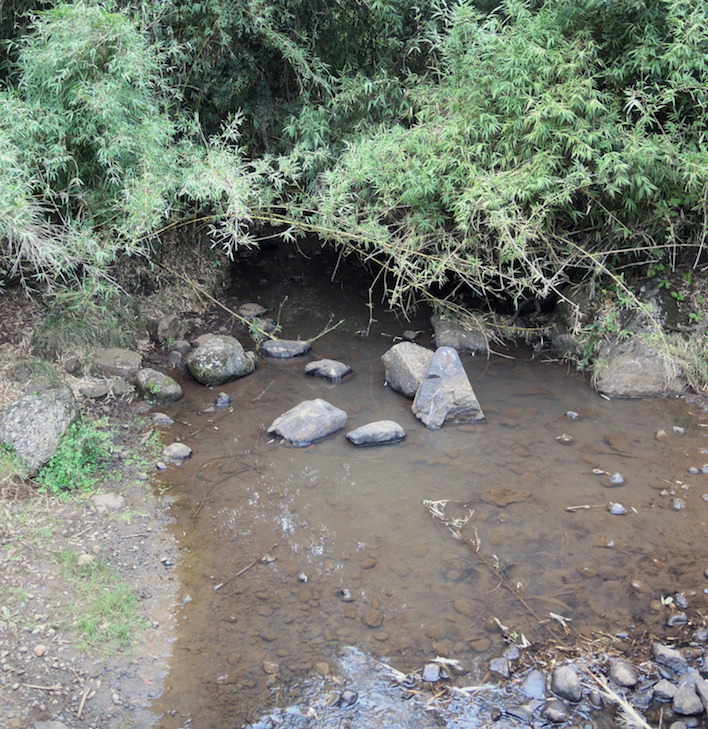
24 March – On the road to visit to Rucamanke to view plantations, clearcuts and loss of water in rivers, a trickle of water flows into Mapuche Territory. Due to the water used by industrial monoculture plantations of pine and eucalyptus trees, there is a serious lack of water in rural communities, and some communities have no water at all.
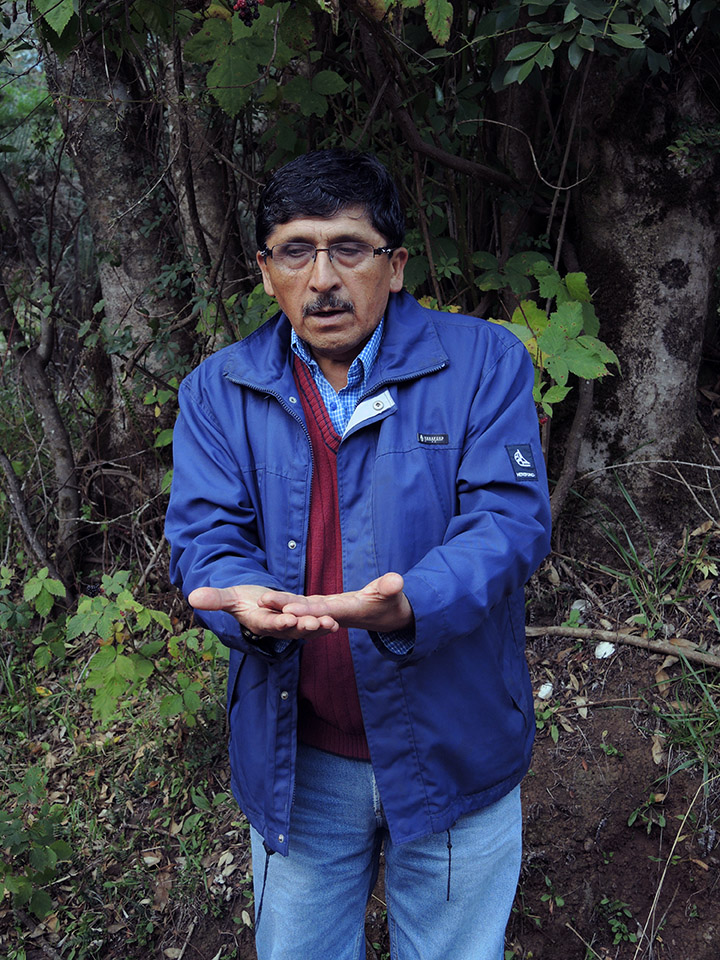
The visit towards Rucamanke was guided by Roberto Antimil, a local resident
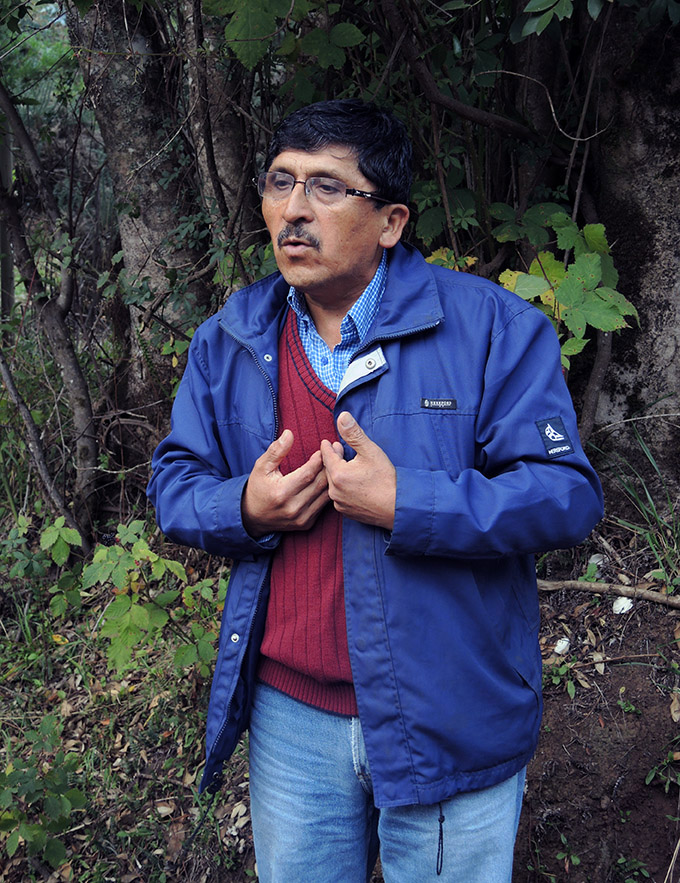
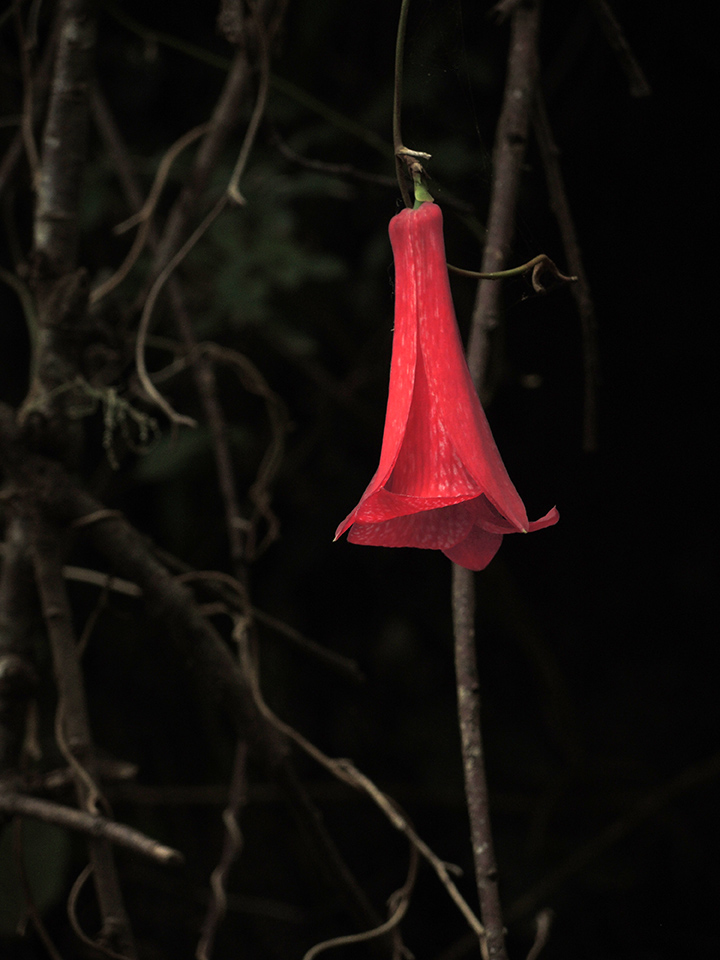
Near the low water of the river was the Copihue, the national flower of Chile. The right to water is universal to be shared by all life, not just industry for profit.
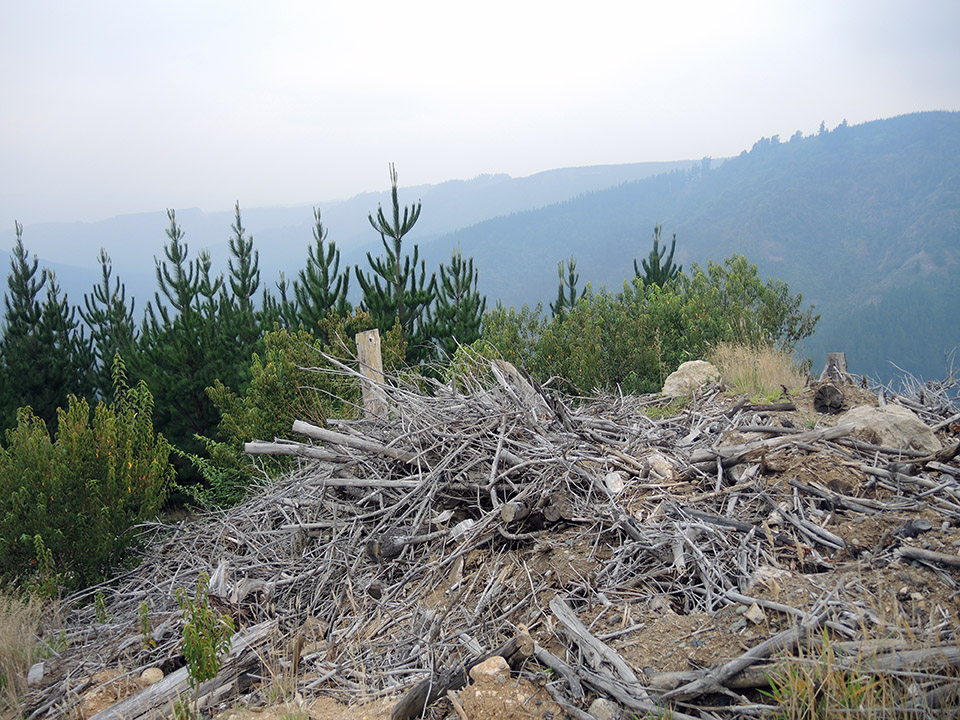
Slash in front of a new pine plantation in the center
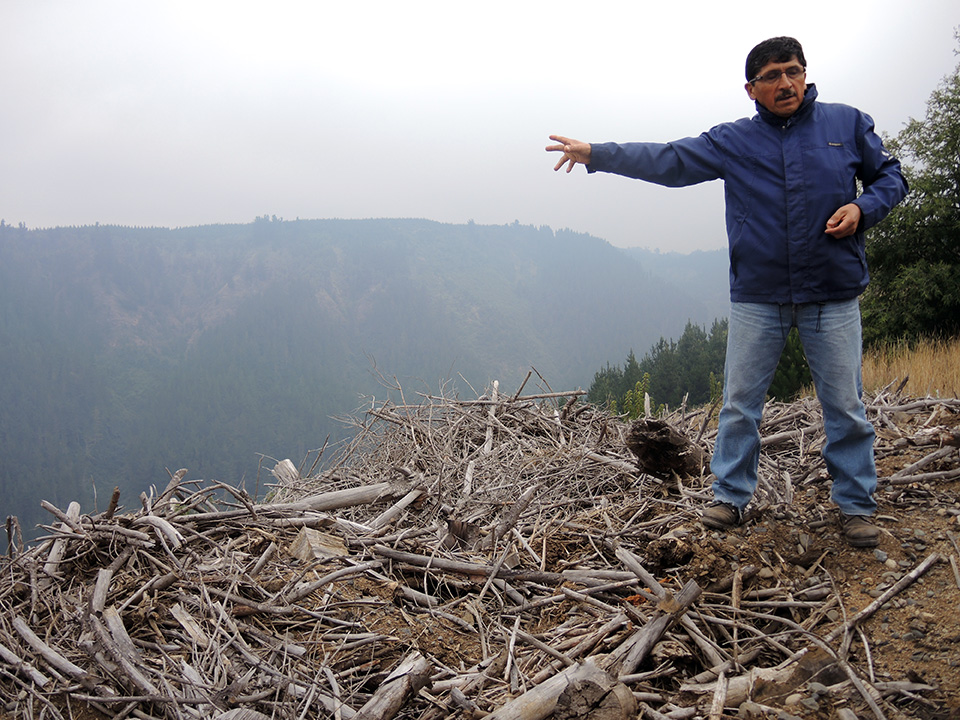
Roberto Antimil stands on slash pointing to the plantations on the next ridge and the clearcuts below in the valley
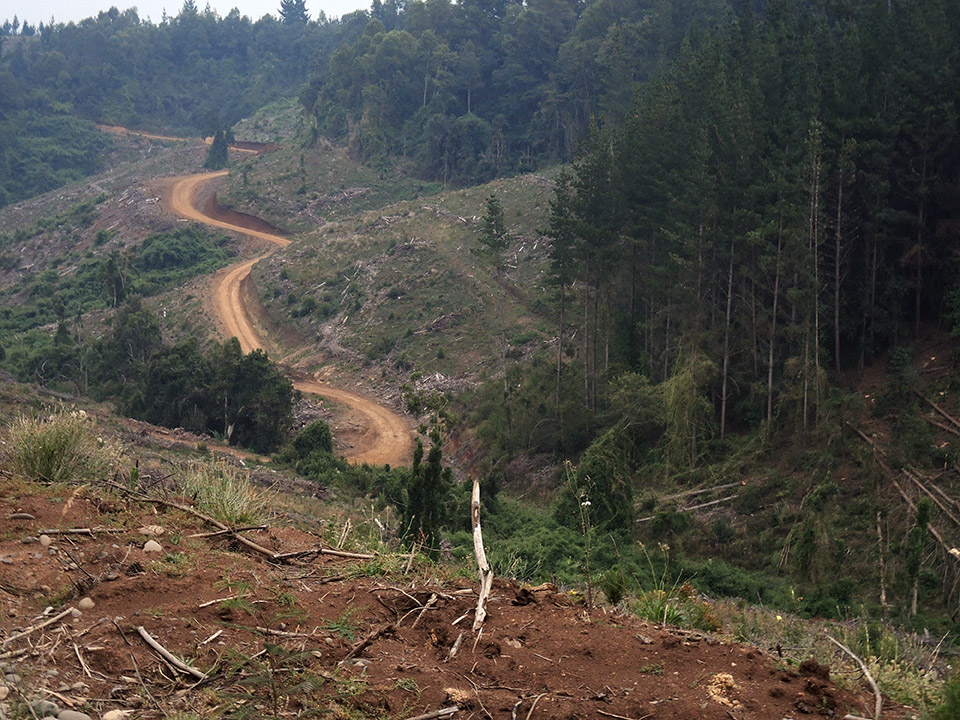
A clearcut in the valley below

Later that evening the delegation traveled to the local schoolhouse to talk with Paz, the school teacher, about the impacts of the loss of water on the community.
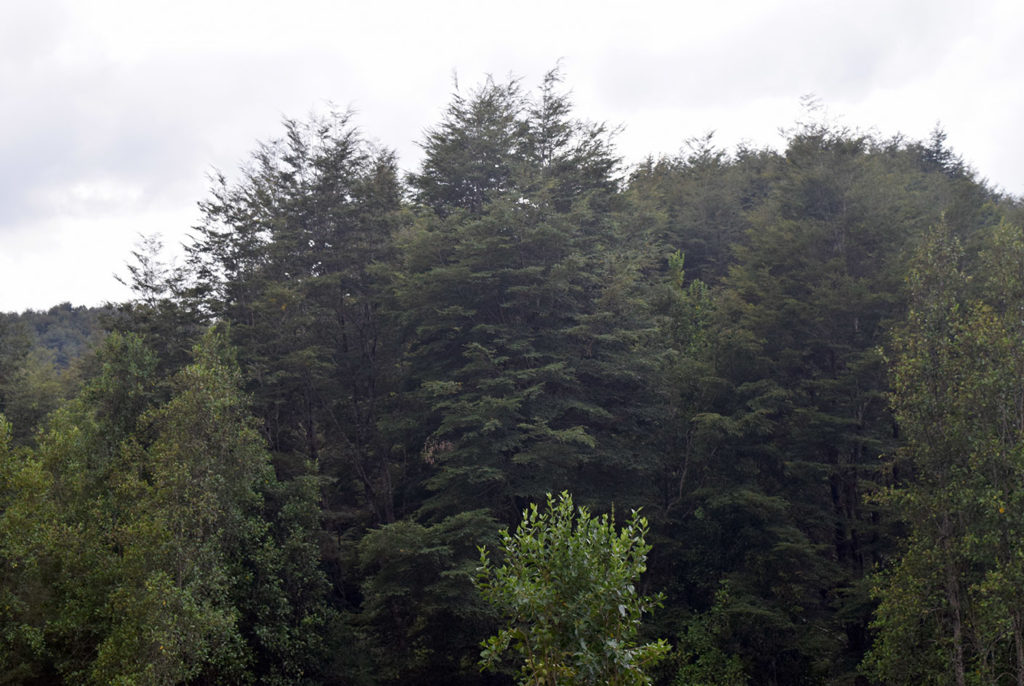
25 March visit to Mapuche community Chaura in Lican Ray. There are still native forests but the community expressed their concerns about the encroachment of the timber plantations.
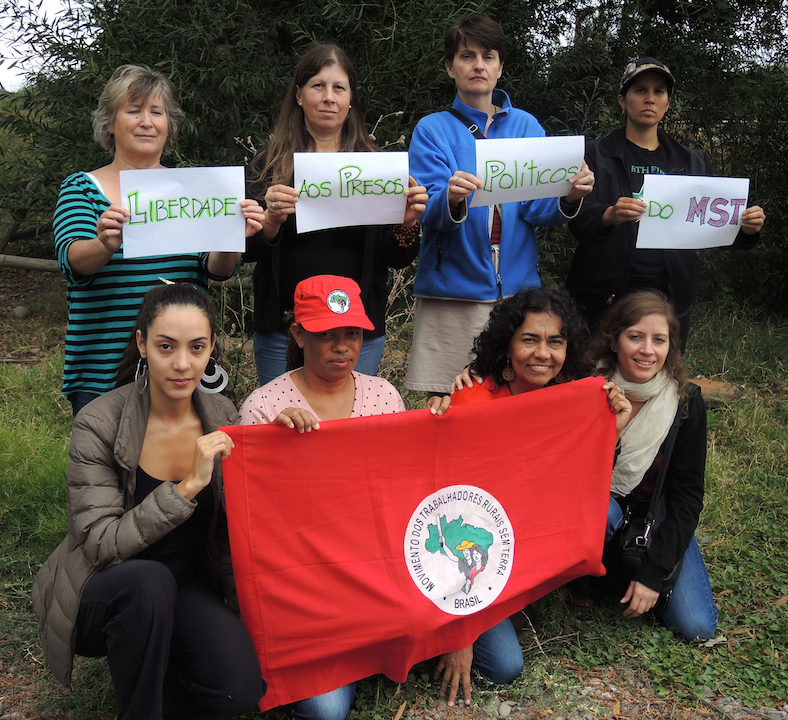
On the way back to Santiago for more meetings and another university presentation, women members of the delegation hold signs demanding freedom for political prisoners from the MST (Landless Workers Movement) in Brazil. The MST have had a years-long campaign against huge eucalyptus tree plantations there, and were in Chile to share their experiences. Since last year’s right-wing coup in Brazil, the MST has faced an escalating campaign of repression with the aim of eliminating opposition to the new government’s neoliberal reforms. MST members and supporters have denounced the criminalization of popular movements and the arbitrary arrest of militants. MST members accompanied this delegation. The threat of genetically engineered trees in Brazil’s eucalyptus plantations is rising every day.

Delegation Presentations:

22 March, International Water Day at a public event at the University of Concepcíon, School of Medicine, included an all woman panel (above) “GE Trees: The New Evil Impulse of the Forestry Industry”.
23 March, Temuco – A presentation by Alfredo Seguel, a Mapuche organizer with “Red de Defensa de los Territorios Araucanía” (Network in Defense of the Araucanía Terriories) about the many industrial threats to the Araucanía region, including the salmon industry, 60,000 hectares of forestry plantations, roads, landfills, copper mining and energy projects that include 15 hydroelectric projects, six wind projects, one geothermal project and four coal plants; as well as the privatization of water.
24 March, Public Presentation at the Universidad de la Frontera in Temuco “International Day: Extractivism, the Water Crisis and Transgenic Trees”. A press conference followed with Hispan TV, Radio Araucana, Radio Frontera, Radio Kurruf and Radio Bío Bío.
28 March, Public Presentation at Santiago’s University of Chile Law School “Transgenic trees: When the remedy is worse than the disease”.
For more information please go to the Campaign to STOP GE Trees
